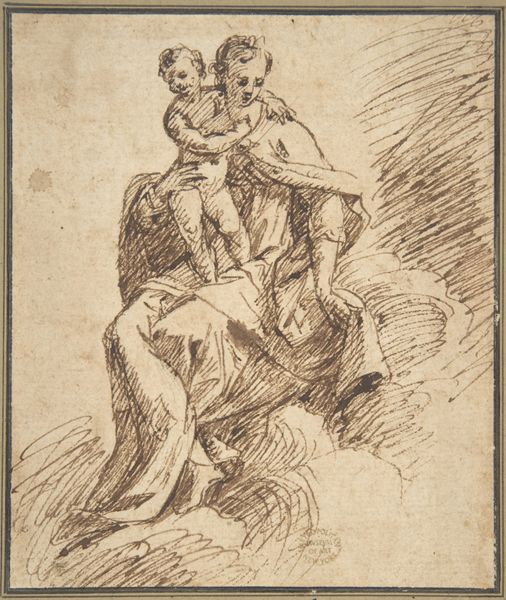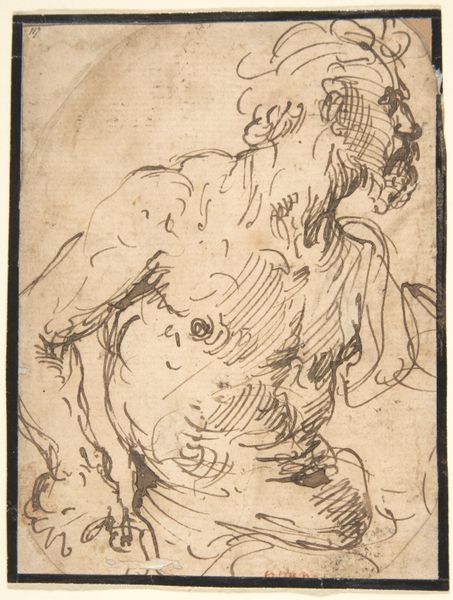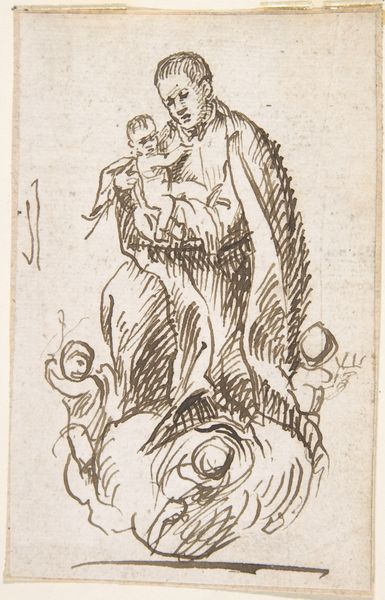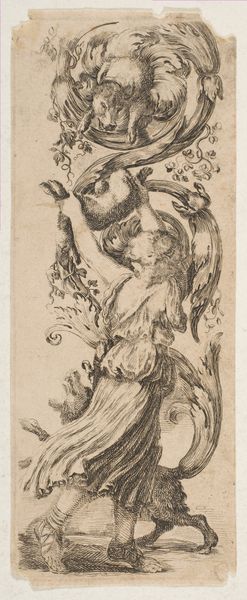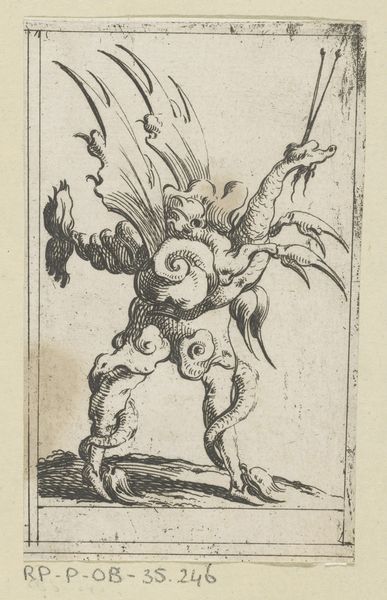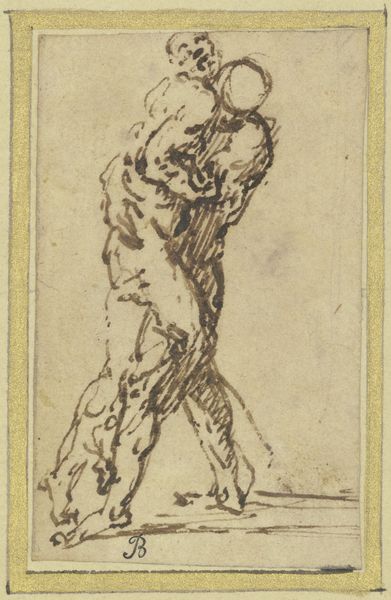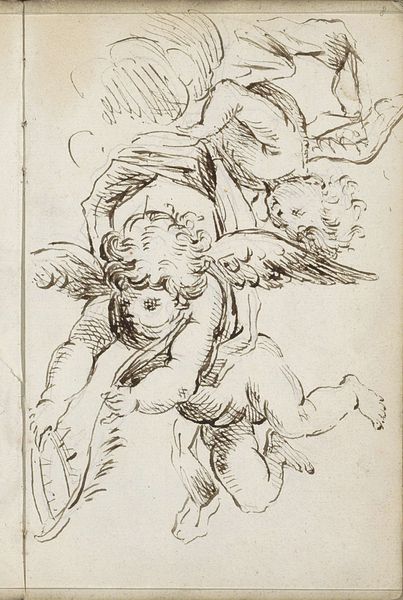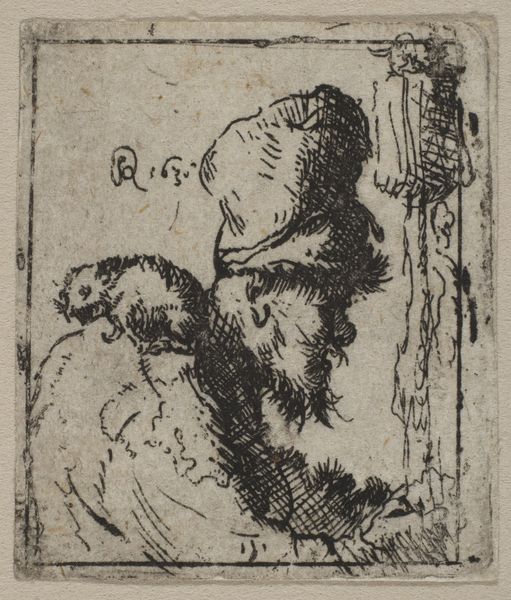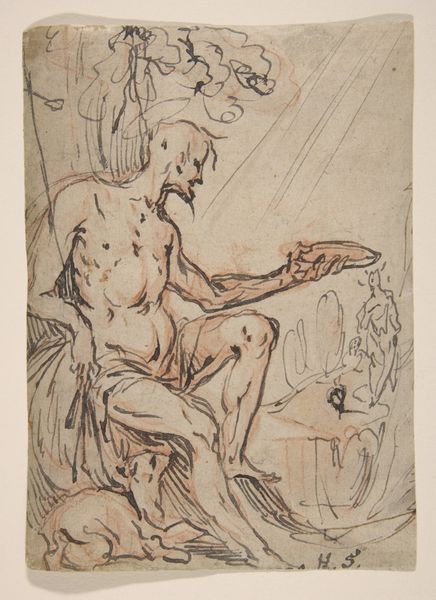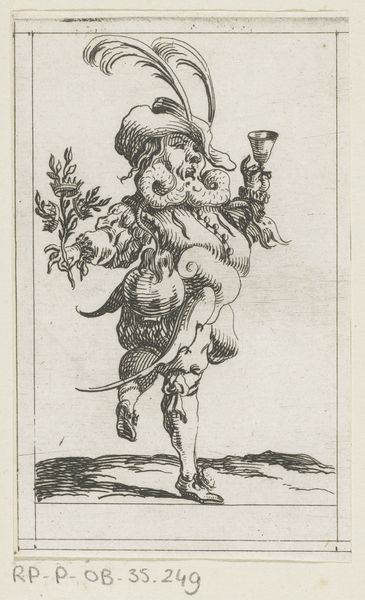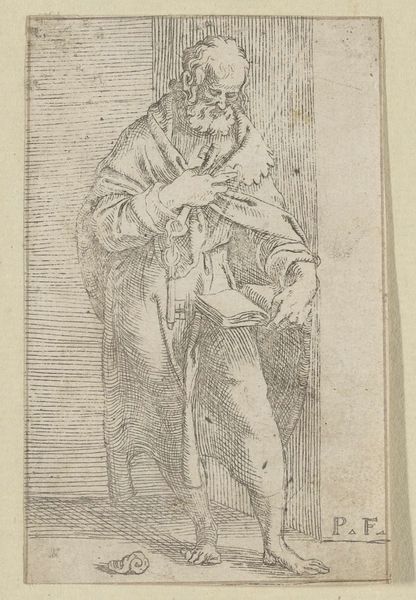
drawing, print, ink
#
drawing
#
ink drawing
#
baroque
# print
#
figuration
#
ink
Dimensions: 4-11/16 x 2-13/16 in. (11.9 x 7.1 cm)
Copyright: Public Domain
Curator: Oh, wow, there's such a feeling of contained drama here! The whole thing feels so urgent and immediate, like a captured thought. Editor: Indeed. We are looking at "Saint Francis Borja," an ink drawing completed sometime between 1726 and 1736 by Pedro Duque Cornejo, currently housed at the Metropolitan Museum of Art. I find myself reflecting on how Duque Cornejo captured this sense of fleeting yet profound spiritual crisis in a such direct, unadorned manner. Curator: The figure's posture, that slightly hunched lean, transmits a feeling of, what? Disappointment? Perhaps weariness. Editor: I agree. But let us situate Francis Borja, a Spanish Jesuit, within his own tumultuous historical context. Born into nobility, he underwent a radical spiritual conversion following the death of Empress Isabella. This moment marks a stark renunciation of earthly power for divine service, which Duque Cornejo dramatizes here. Note the discarded crown. Curator: Yes, the crown, almost tumbling off the earth! So many figures crammed into a small space, but the haloed saint, top center, somehow feels… isolated. It is as if the turmoil surrounds him without really touching him. I can really feel his sense of grief in his face. Editor: I think you're onto something crucial here, that distinction of presence within the tumult. He's among the chaos of earthly life—symbolized by the globe, cherubs, crown—yet separate, already stepping toward a different plane of existence. This reading of 'detachment' is supported when the Baroque is analyzed, as an aesthetic mode, for it often acted as an apologist arm of Catholic ideologies. The figures, the crown: all excess! All vanities in need of discipline. Curator: Looking closely at the lines… such energy! Some lines are hesitant, barely there, then a dark, decisive stroke defines a contour. Editor: That variance echoes the internal conflict we have been discussing, wouldn't you say? Baroque art is nothing, if not dramatic! Curator: I do agree! This small ink drawing certainly has given me so much food for thought about bigger existential quandaries. Editor: Absolutely. An inquiry into both personal transformation, as well as a broader meditation on the nature of devotion and renunciation during this pivotal historical period.
Comments
No comments
Be the first to comment and join the conversation on the ultimate creative platform.
